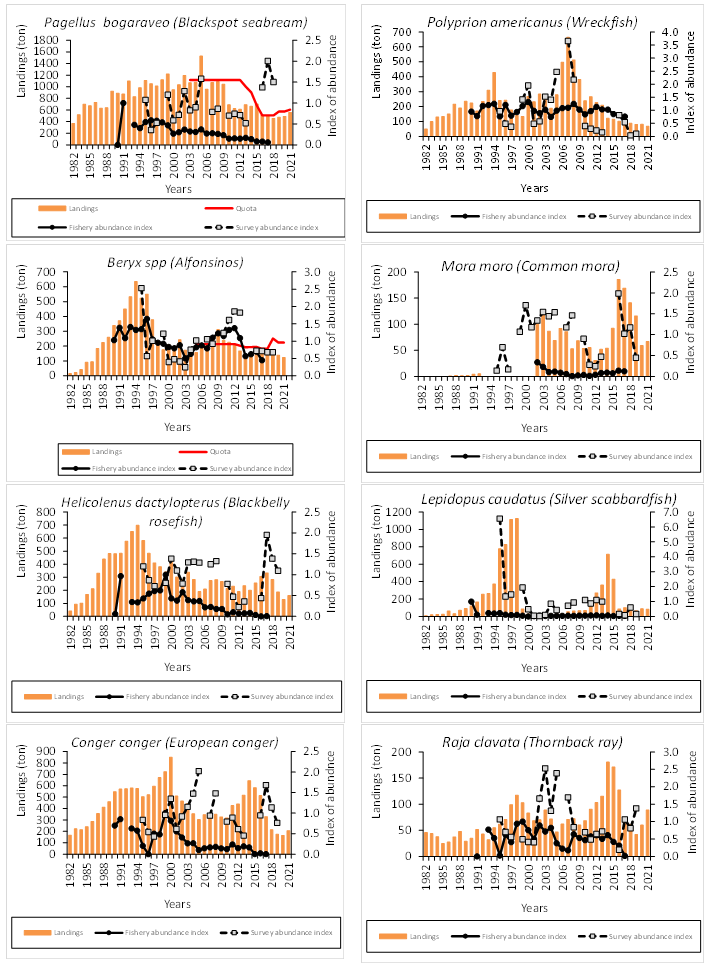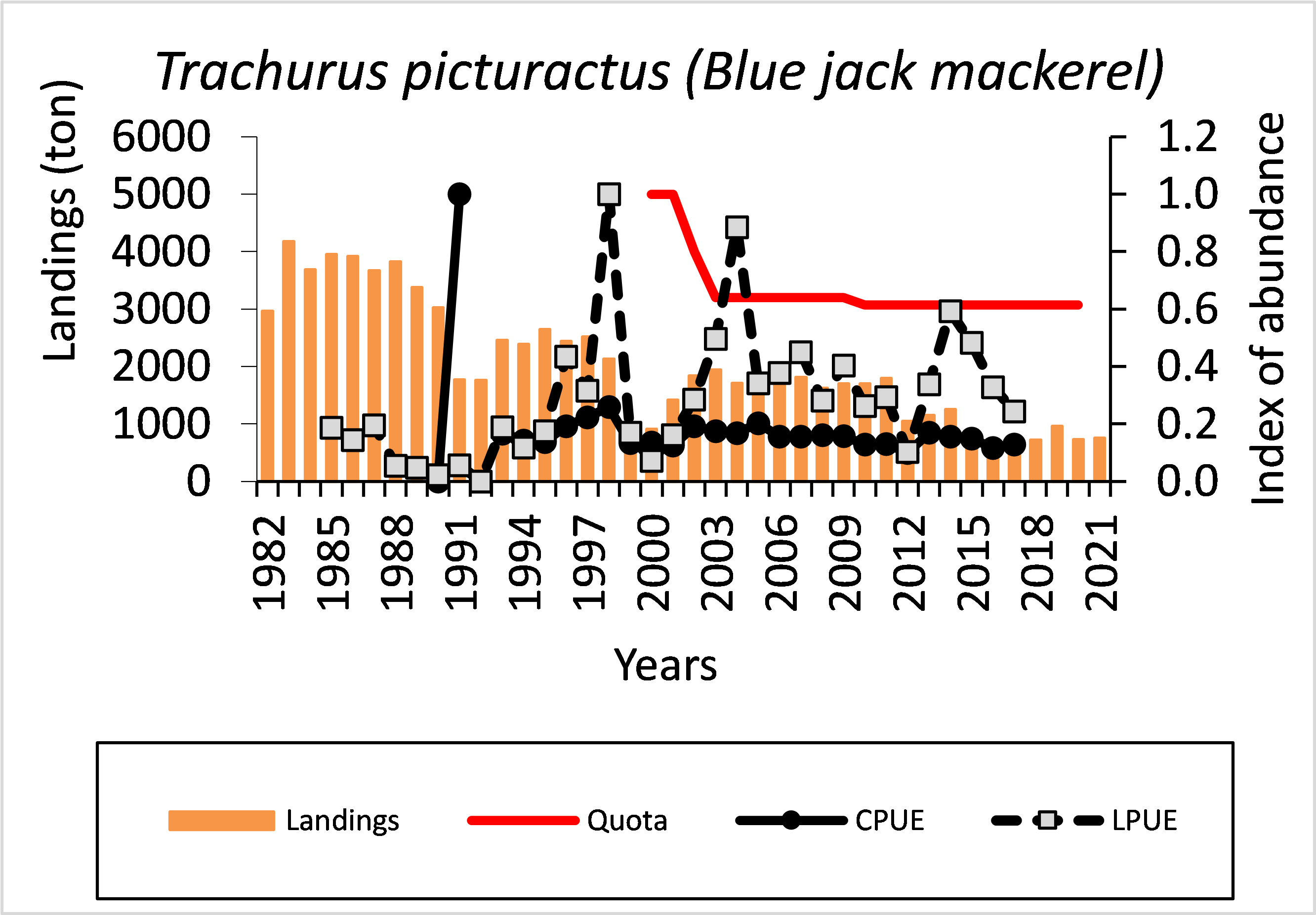Fishing is the main activity contributing to the pressures in the Azores ecoregion. Commercial demersal fisheries take place in coastal areas (using handlines and gillnets), using bottom longlines and handlines on the slopes and in the deep seas. Fisheries for large pelagics use surface longlines as well as pole and line, and fisheries for small pelagics use purse-seines. The bulk of the fisheries, both pelagic and demersal, occur at depths of less than 700 m. Fishing is prohibited below 800 m in the ecoregion. Other fisheries also occur seasonally in some coastal areas, such as the hand harvesting of littoral invertebrates and a trap fishery for benthic crustaceans. Recreational fishing is a relatively important activity because of increasing levels of tourism. Bottom trawling has been banned since 2005.
Commercial stocks
The majority of the fisheries in the ecoregion is performed by Azorean vessels, with only a small proportion of the catch taken by vessels from the mainland of Portugal and from Spain (swordfish surface longliners).
Around 90% of the vessels in the Azorean fleet are less than 12 m, and the fleet is licensed to target several species. Demersal and tuna are the most important fisheries (representing on average almost 80% of the total landings in weight). The fishery is flexible, however, changing the target according to species abundance and market price.
Recreational fishery is also an important component, targeting littoral/coastal resources, demersals, and large pelagics; this trend is increasing because of an increase in tourism.
Fish stocks in the Azores ecoregion are typically part of stocks with a broad distribution, thus the state of stocks is affected by pressures over a wider area than just the ecoregion itself. Most of the demersal/deep-water, small pelagic, and tuna resources are monitored and routinely assessed by ICES or ICCAT. Out of those it is only tunas that have an analytical assessment, with the other fished species managed under the precautionary approach. Tunas, however, have a much broader distribution and the Azores fisheries have only a minor impact on the stock biomass. They will therefore not be considered here (see ICES Oceanic Northeast Atlantic Ecosystem Overview). For the other resources assessed under ICES, the key species that control the dynamics of the demersal/deep-water and small pelagic fisheries are shown on the figure on the right.

Figure 3: Trends of landings and abundance indices for the main demersal/deep-water fish of the Azores.

Figure 4: Trends of landings and standardized abundance indices for the main small pelagic resources of the Azores.
Molluscs (Patella spp. and Megabalanus azoricus) have been heavily exploited commercially in the Azores ecoregion, and are now on the OSPAR list of threatened and declining species.
Seabirds and marine mammals
Observer programmes in Azorean fisheries have found few or no seabirds as bycatches. However, data on the incidental catch of seabirds are lacking for fisheries that use pole and line. There are negligible effects on marine mammals from Azorean fisheries, although interactions have been reported.

